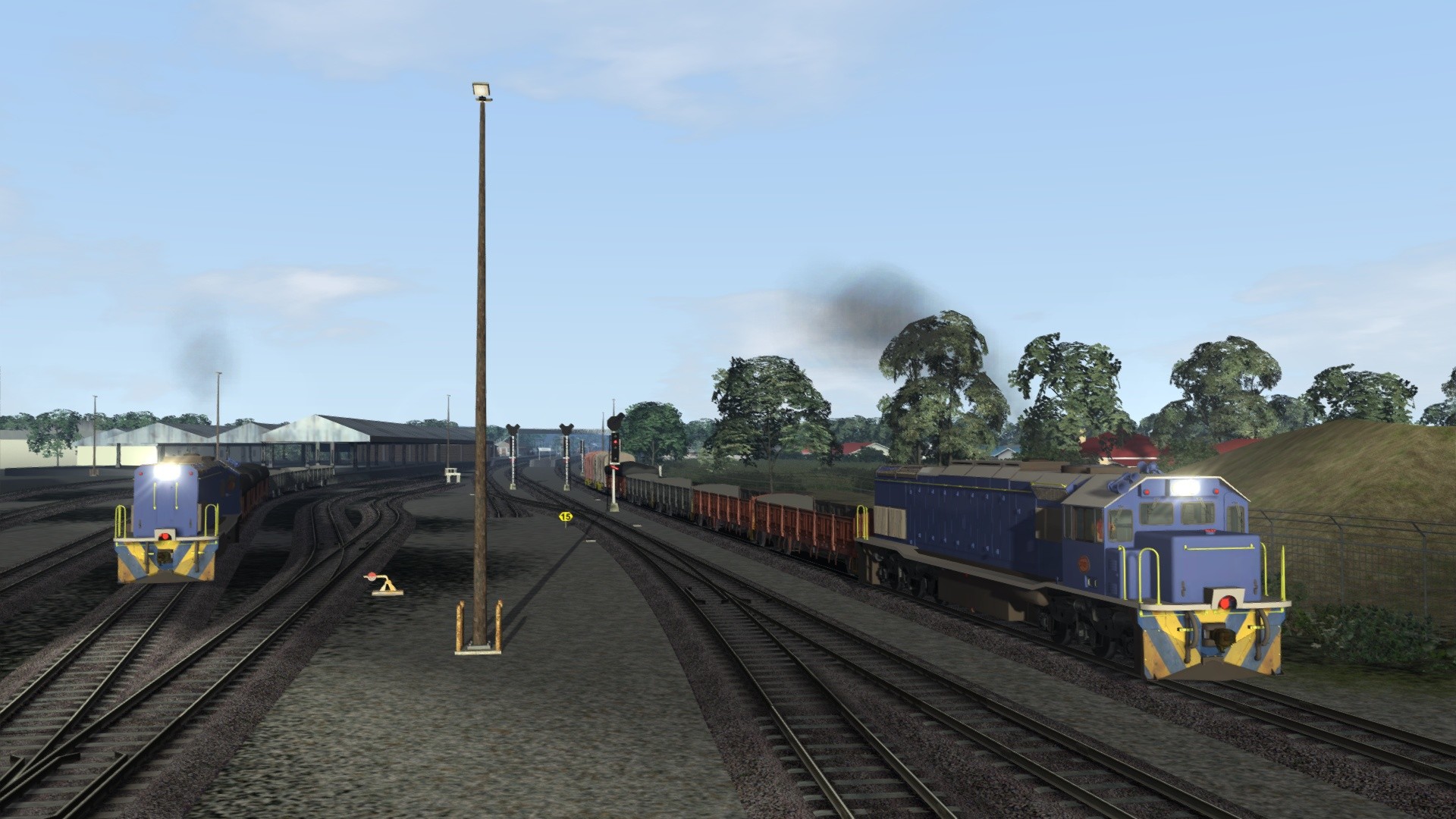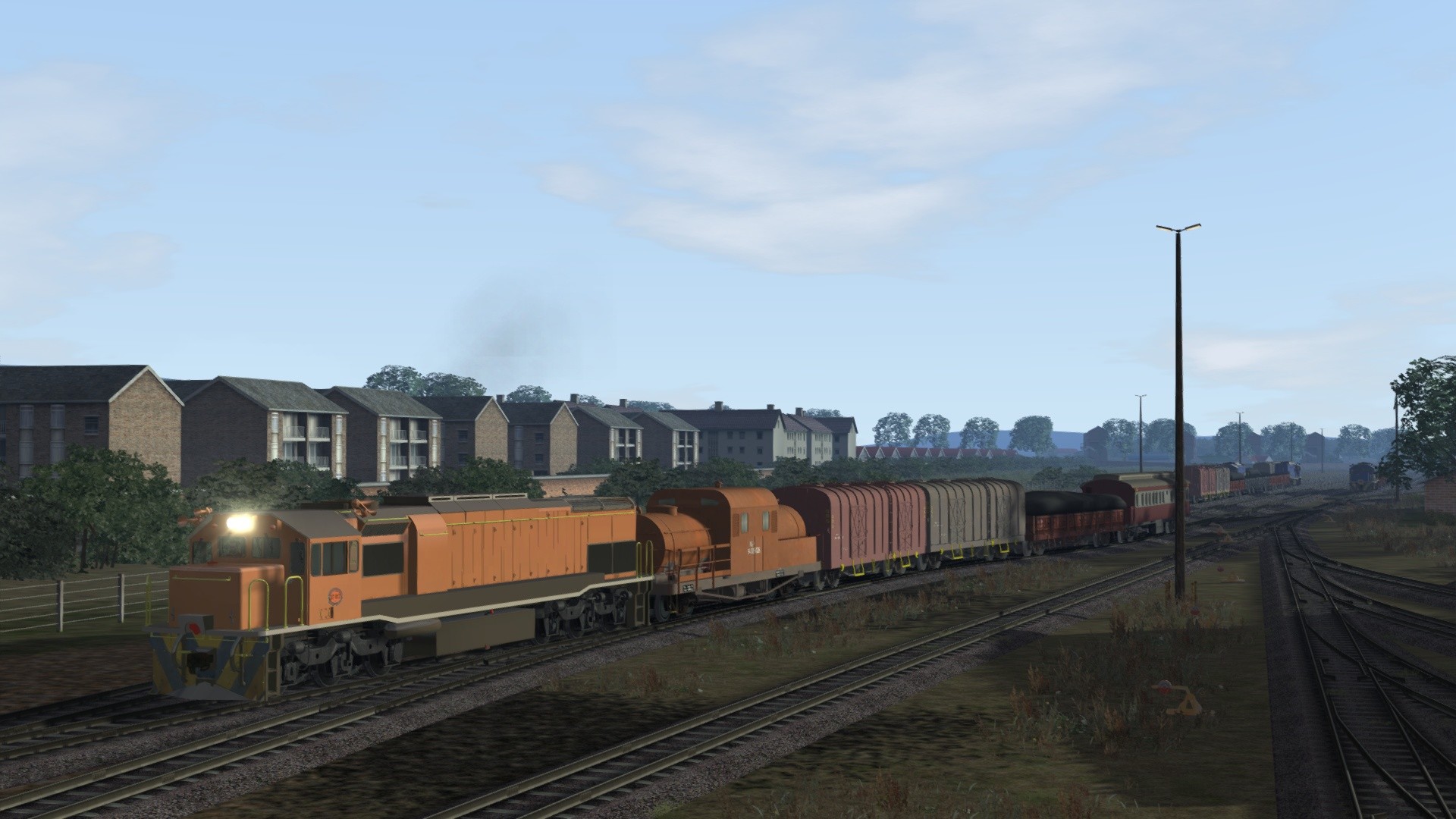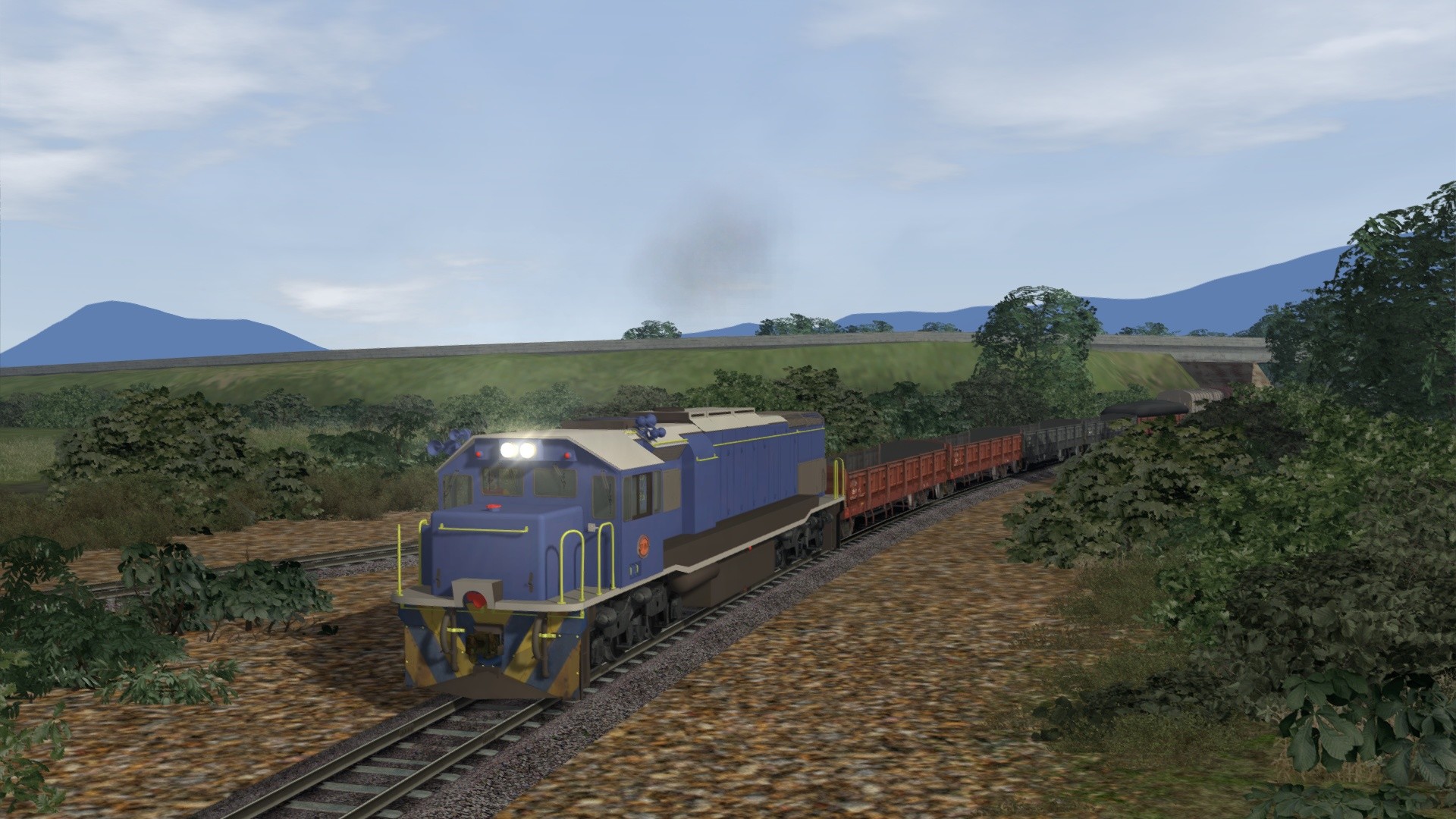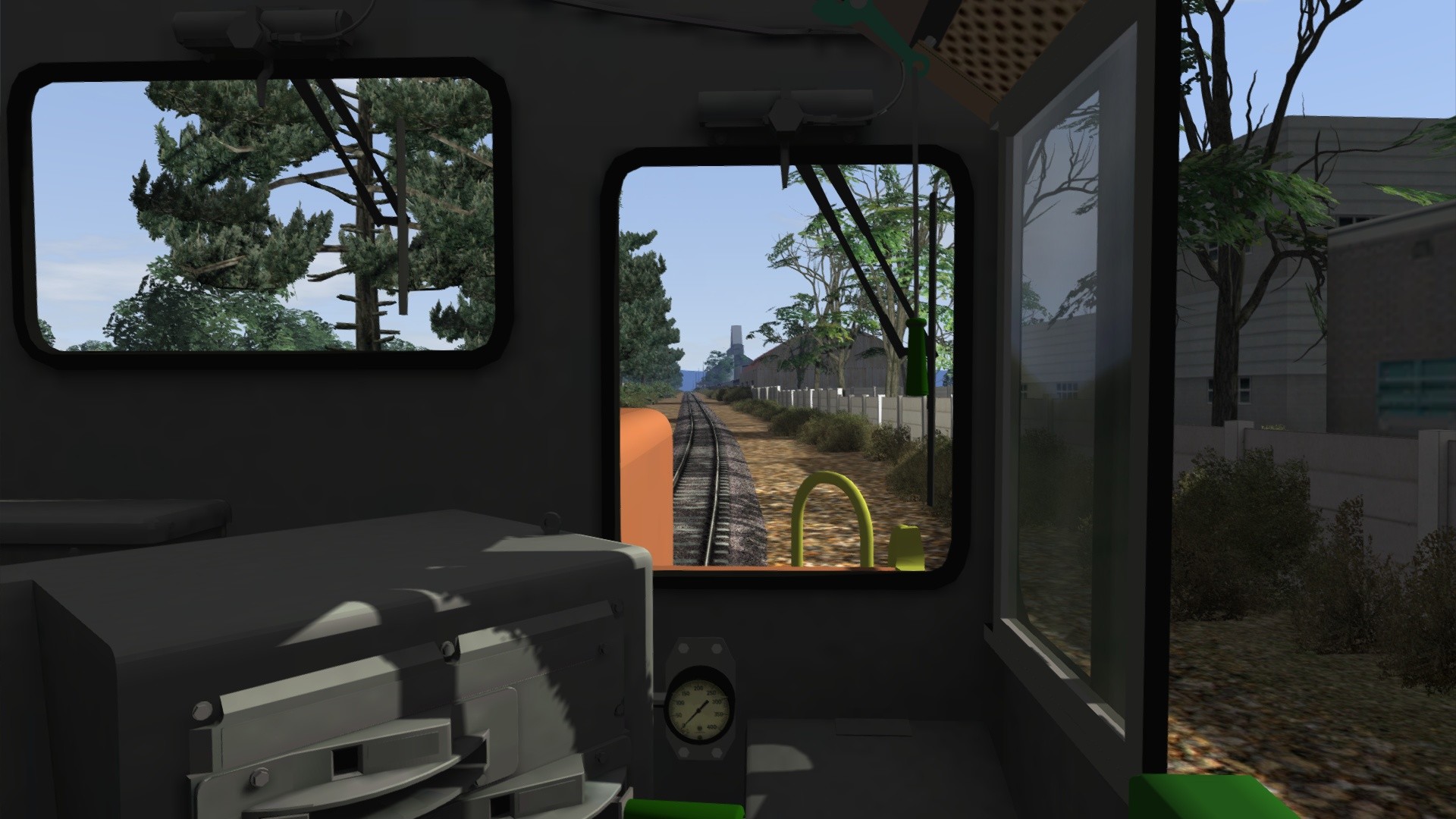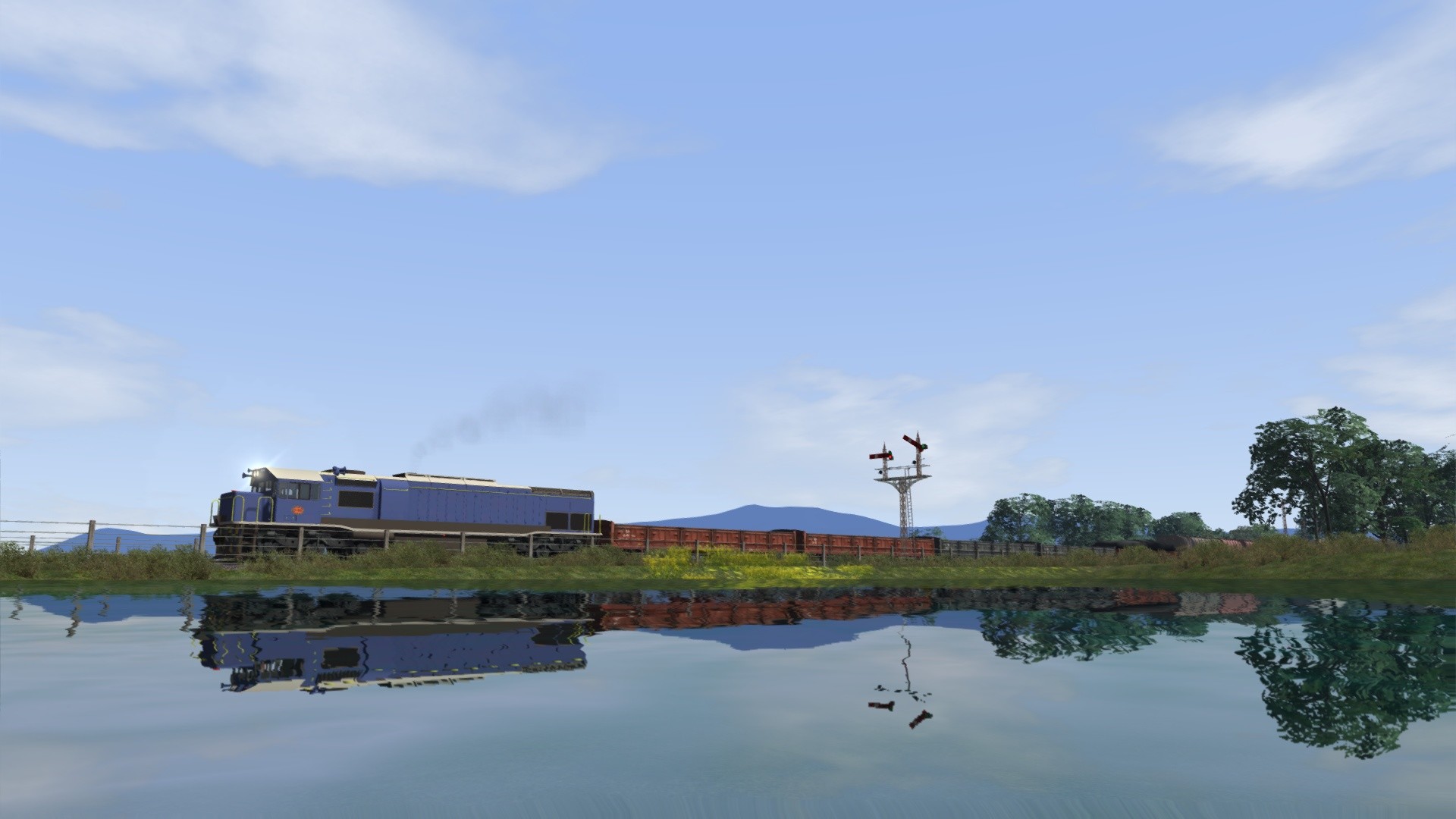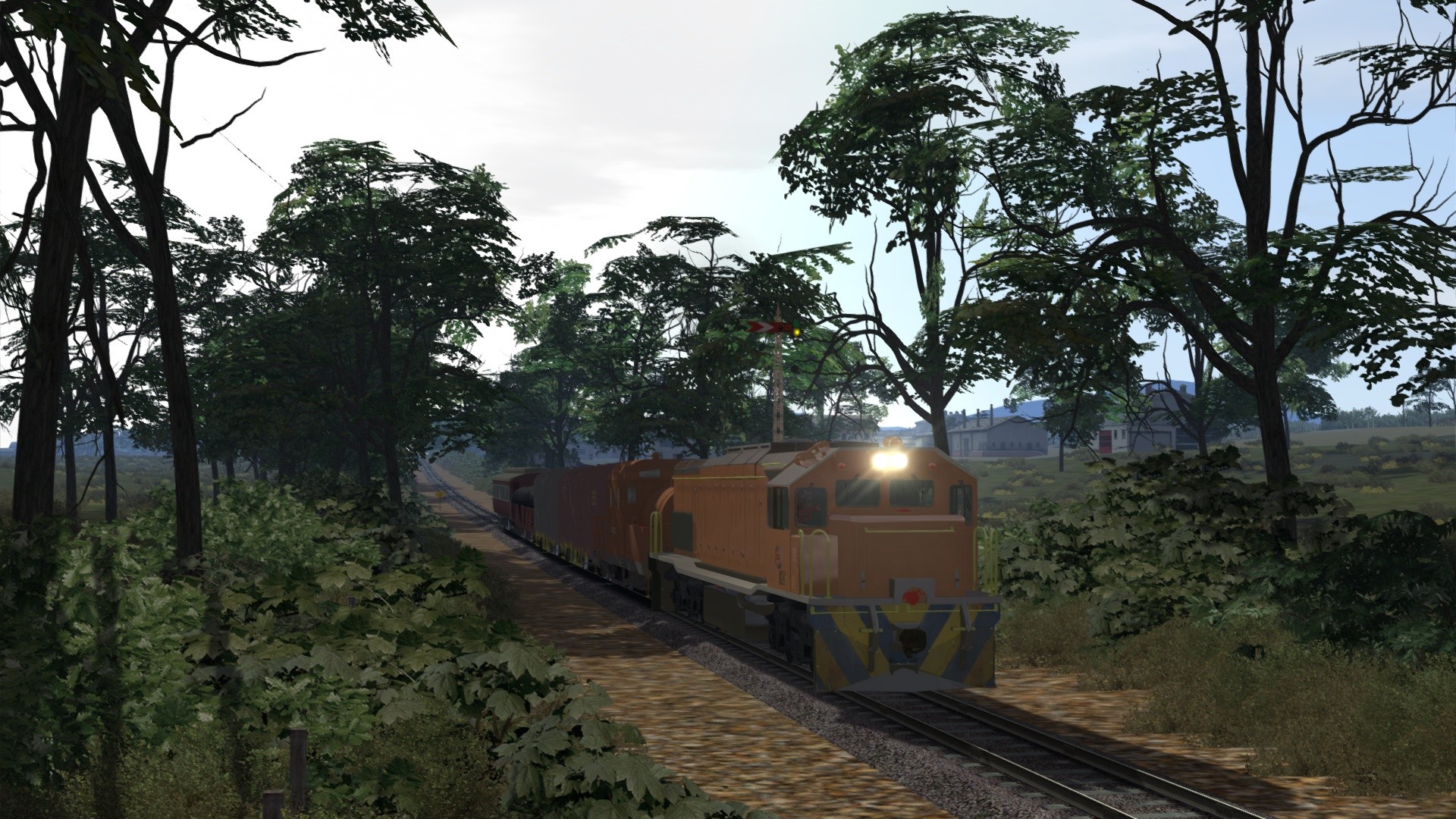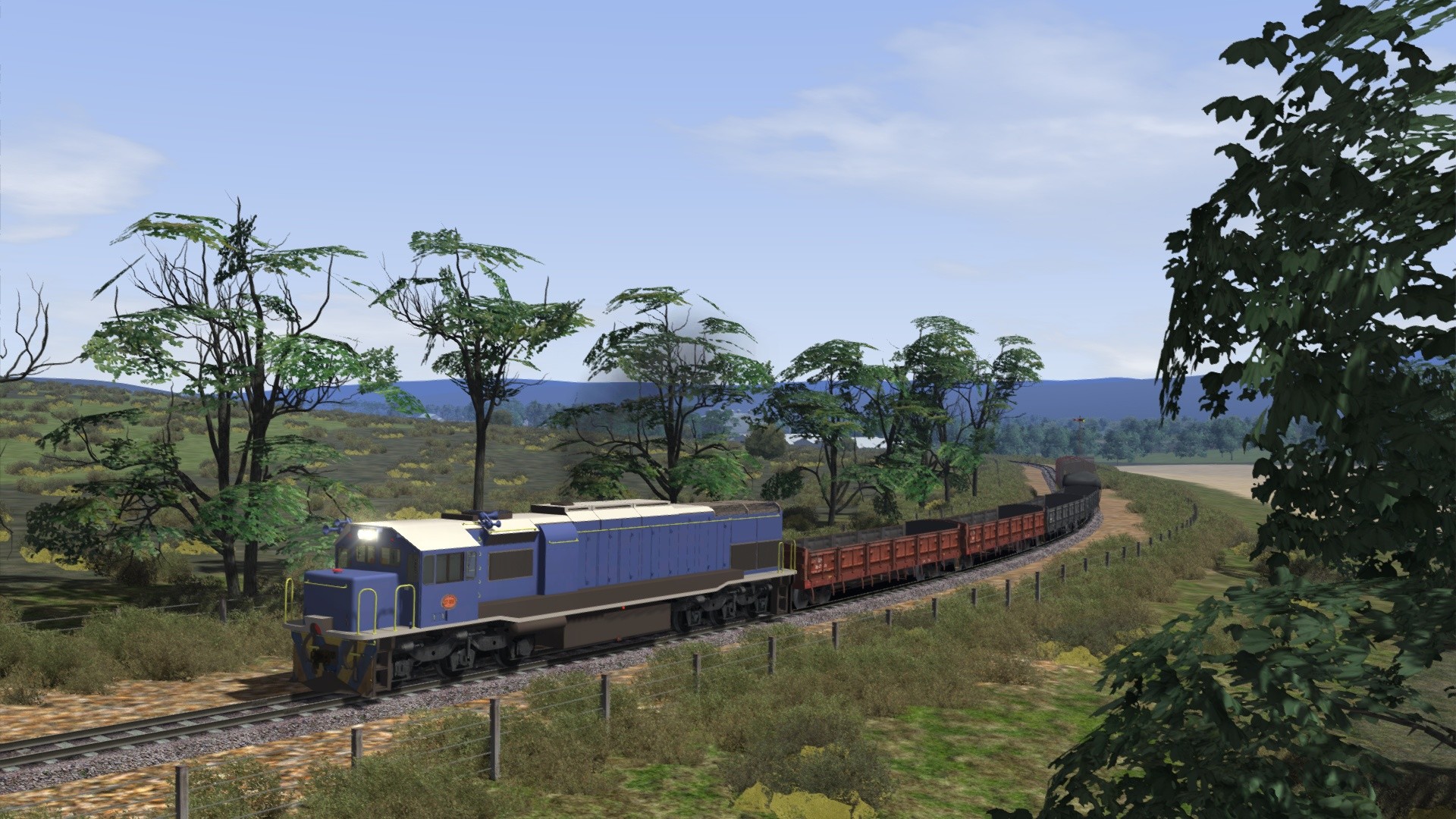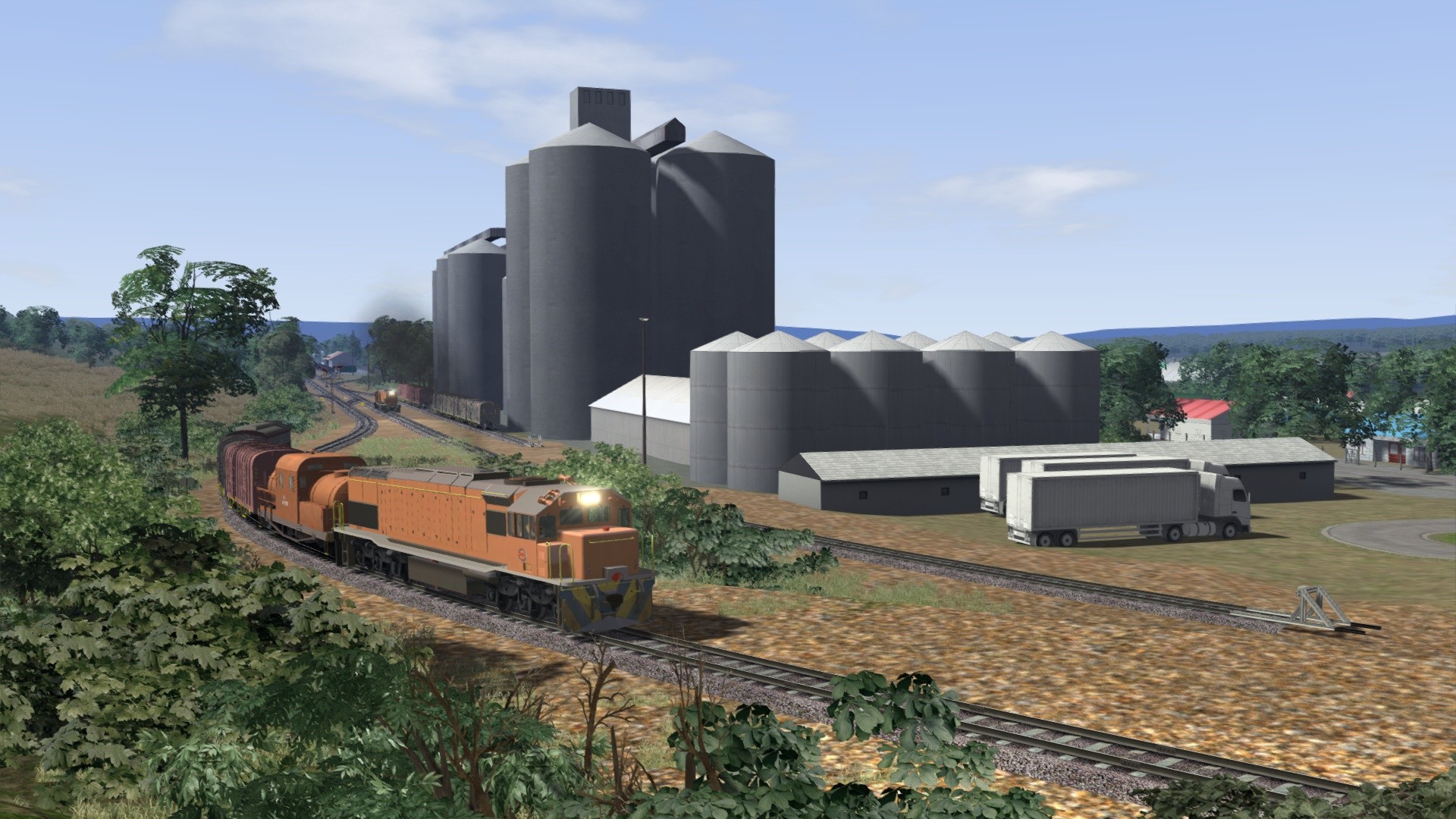Train Simulator: Worcester - Mossel Bay Railway Route Add-On
Explore the expansive Mossel Bay route and all its sights and “scents” in Train Simulator!
Discussions for a new railway line in South Africa were first had in 1883. The intention was to link villages and agricultural land to Cape Town, allowing for faster transportation of fresh produce into markets there. Farmers were quick to persuade entrepreneurs that were based in London, England to set up the Cape Central Railway, and kick off its construction eastward from Worcester to Roodewal (now Ashton) via the Breede valley.
The first 70 kilometres (44 miles) was constructed over the next few years and public services started running in 1887, initially across a short section to Robertson, with the full line opening some 10 months later. Unfortunately though, competition from ox-wagon traffic was too great, and the CCR was declared bankrupt after only 2 years of operation. Services struggled on until 1892 when it was sold to a brand new company, the New Cape Central Railway (NCCR). The NCCR’s plans for the dwindling line were much more ambitious – an extension to Mossel Bay.
This was to be no mean feat, the bay was some 200 kilometres (124 miles) further from Ashton (as the crow flies) and between the two was challenging terrain. Nevertheless, the NCCR got on with acquiring land and started extending the line eastbound; Swellendam was reached by 1899 and Riversdale in 1903.
In order to achieve such expansion so quickly, a simple path through the rugged hills was not possible, and instead, the railway weaved its way up and down each slope. This, plus a cheaper than standard rail, resulted in slower speed limits throughout and a more challenging (and breath-taking) journey through the rolling fields of South Africa.
The line finally reached the eastern coast at Voorbaai in 1906, where it joined up with the Grand Junction Railway and its George – Mossel Bay line. The NCCR was complete, and it was a success – it eventually took over operations to George and trains were running regularly across the route. The line was soon incorporated into the greater ”South African Railways” and was also upgraded to full mainline status (by means of replacing with sturdier rails) by 1931.
The railway was known for many characteristics in its heyday, but none are quite as distinctive as its smell. Most railways around the world can’t be defined by smell, but the Mossel Bay line was different; a mix of coal smoke, and plants local to the region, gave the entire line an unmistakable aroma that stuck with workers and enthusiasts alike.
While Train Simulator doesn’t support the accompanying scents, that hasn’t stopped Johansteam and Hermann Kühne from working hard to recreate the Mossel Bay line in full, sprawling across 320 kilometres (199 miles) of unique and varied landscapes, capturing the feel of the line in true “head out of the cab” style! Accompanying the Worcester – Mossel Bay route is the South African Class 37, as well as a collection of freight and passenger rolling stock for appropriate mixed-traffic haulage.
A total of 9 Career and 1 Free Roam scenarios are included:
More scenarios are available on the Steam Workshop online and in-game. Train Simulator’s Steam Workshop scenarios are free and easy to download, adding many more hours of exciting gameplay. With scenarios being added daily, why don’t you check it out now!
Discussions for a new railway line in South Africa were first had in 1883. The intention was to link villages and agricultural land to Cape Town, allowing for faster transportation of fresh produce into markets there. Farmers were quick to persuade entrepreneurs that were based in London, England to set up the Cape Central Railway, and kick off its construction eastward from Worcester to Roodewal (now Ashton) via the Breede valley.
The first 70 kilometres (44 miles) was constructed over the next few years and public services started running in 1887, initially across a short section to Robertson, with the full line opening some 10 months later. Unfortunately though, competition from ox-wagon traffic was too great, and the CCR was declared bankrupt after only 2 years of operation. Services struggled on until 1892 when it was sold to a brand new company, the New Cape Central Railway (NCCR). The NCCR’s plans for the dwindling line were much more ambitious – an extension to Mossel Bay.
This was to be no mean feat, the bay was some 200 kilometres (124 miles) further from Ashton (as the crow flies) and between the two was challenging terrain. Nevertheless, the NCCR got on with acquiring land and started extending the line eastbound; Swellendam was reached by 1899 and Riversdale in 1903.
In order to achieve such expansion so quickly, a simple path through the rugged hills was not possible, and instead, the railway weaved its way up and down each slope. This, plus a cheaper than standard rail, resulted in slower speed limits throughout and a more challenging (and breath-taking) journey through the rolling fields of South Africa.
The line finally reached the eastern coast at Voorbaai in 1906, where it joined up with the Grand Junction Railway and its George – Mossel Bay line. The NCCR was complete, and it was a success – it eventually took over operations to George and trains were running regularly across the route. The line was soon incorporated into the greater ”South African Railways” and was also upgraded to full mainline status (by means of replacing with sturdier rails) by 1931.
The railway was known for many characteristics in its heyday, but none are quite as distinctive as its smell. Most railways around the world can’t be defined by smell, but the Mossel Bay line was different; a mix of coal smoke, and plants local to the region, gave the entire line an unmistakable aroma that stuck with workers and enthusiasts alike.
While Train Simulator doesn’t support the accompanying scents, that hasn’t stopped Johansteam and Hermann Kühne from working hard to recreate the Mossel Bay line in full, sprawling across 320 kilometres (199 miles) of unique and varied landscapes, capturing the feel of the line in true “head out of the cab” style! Accompanying the Worcester – Mossel Bay route is the South African Class 37, as well as a collection of freight and passenger rolling stock for appropriate mixed-traffic haulage.
Included Scenarios
A total of 9 Career and 1 Free Roam scenarios are included:
- 1A Worcester – Robertson Leg
- 1B Robertson – Bonnievale Leg
- 1C Bonnievale – Swellendam Leg
- 1D Swellendam – Karringmelk Leg
- 2A Voorbaai – Albertinia Leg
- 2B Albertinia – Riversdale Leg
- 2C Riversdale – Heidelberg Leg
- 2D Heidelberg – Karringmelk Leg
- Last Leg
- Free Roam Worcester
More scenarios are available on the Steam Workshop online and in-game. Train Simulator’s Steam Workshop scenarios are free and easy to download, adding many more hours of exciting gameplay. With scenarios being added daily, why don’t you check it out now!
Key Features
- 320 km (199 mile) route from Worcester to Mossel Bay
- Includes the SA Class 37 diesel locomotive in Orange and Blue liveries
- Includes multiple freight wagons and a passenger coach
- 9 Career scenarios
- 1 Free Roam scenario
- Quick Drive compatible
- Download size: 581.6mb
“Dovetail Games” (“DTG”) is a trading name of RailSimulator.com Limited. "Dovetail Games", “RailSimulator.com” and the “Dovetail Games Train Simulator” logo are trademarks or registered trademarks of DTG. All other copyrights or trademarks are the property of their respective owners. All rights reserved.
